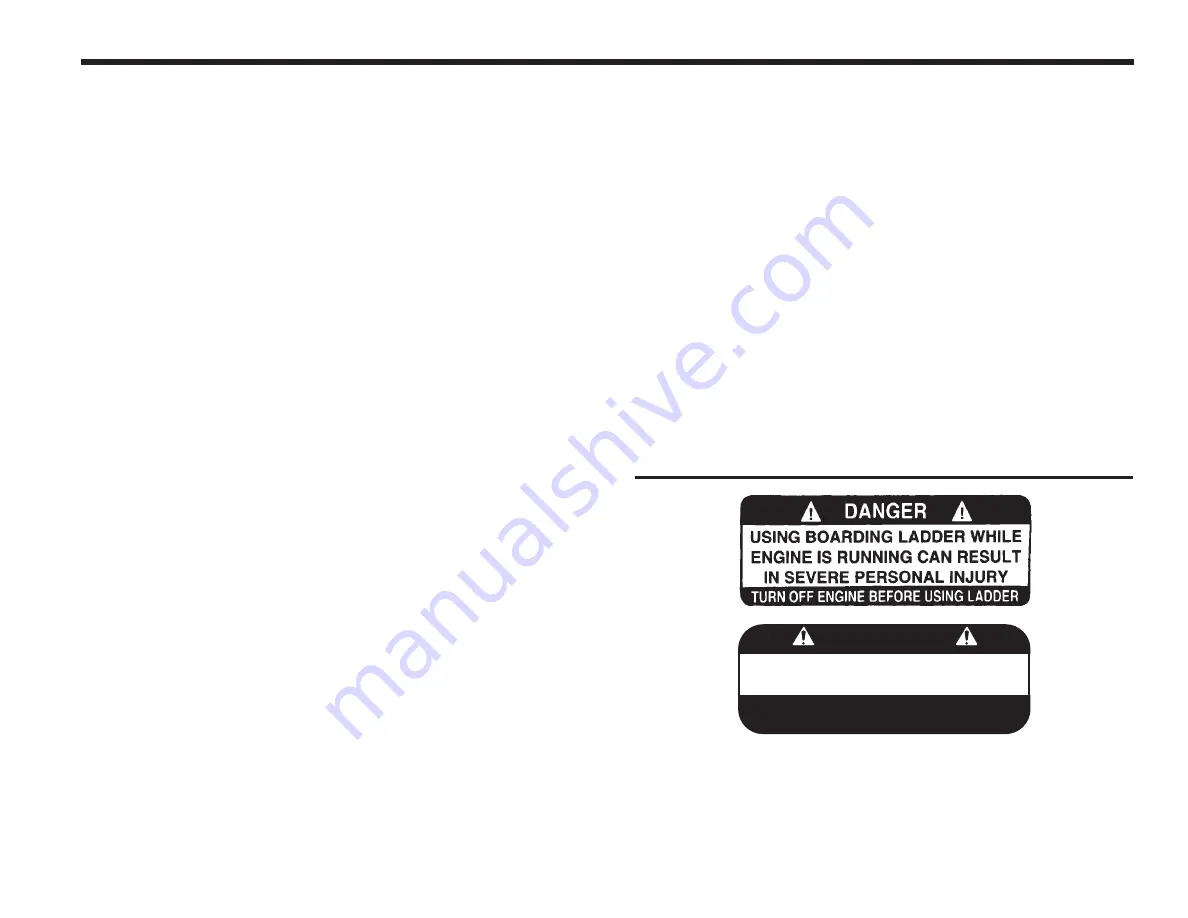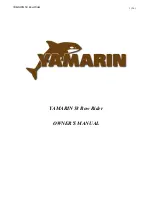
•
Care should be given when launching from trailers with
bunks that are equipped with plastic-like materials. These
materials make the bunk surfaces very slippery, and the boat
may begin to unload as soon as tension is released on the
winch cable/strap.
Bunk or Custom Trailers—Loading
When loading, always prepare for the procedure prior to reaching
the ramp. If the ramp is busy, preparation will shorten the time it
takes for you to get your boat out of the water.
You probably won’t have to back the trailer into the water as far to
load the boat as you did to launch it. In fact, the easiest way is to
back your trailer up until the rear of the bunks are in the water. By not
putting your trailer too deep in the water, your boat will actually cen-
ter itself on the bunks about 1/3 to 1/2 the distance onto the trailer.
Connect the winch cable/strap to the bow eye of the boat. Lock your
winch before attempting to wind the cable/strap in. Once your boat
is aligned and is pulled firmly against the winch stand roller or vee
block and your winch is in the locked position, connect the boat bow
safety chain and you are ready to drive to the loading/preparation
area near the ramp to connect all other tie-downs, lighting or electric
brake connections, etc.
Common Cause of Boat Misalignment
If your boat doesn’t sit level in the water or your bunks or rollers are
not adjusted properly, you may have misalignment problems with
your boat when loading. Basic correction procedures are as follows:
Correction Procedures
Re-measure all roller assemblies that set in a line across from each
other. Make sure the distance to each roller from the centerline of the
trailer is equal. In other words, the left side of your trailer should be
exactly the same as the right side. This is true of bunk or roller trailers.
If your boat keeps going to the port (left) side, remove the boat and
loosen the U-bolts and/or the through bolts that clamp the roller
assemblies on the stern (back) section of the trailer. Force each
assembly to the right as if you were trying to turn the handlebars of
a bicycle. Hold each assembly in this turned position and retighten
the U-bolts and/or through bolts.
This repositioning of the roller assemblies should correct the mis-
alignment of the boat on your trailer. If your boat goes toward the
starboard (right) side, reverse the procedure.
Another common reason for boats not centering themselves is
putting the trailer too deep in the water, which does not allow the
trailer adequate time to center the boat. This is especially true on
roller style trailers.
Note: Make sure your trailer is not too deep in the water or the
boat will float over the rollers and be difficult to load and center.
BOARDING YOUR BOAT
Larger pleasure boats remain stable under most operating condi-
tions because of their beam, draft, and weight displacement.
However, the U.S. Coast Guard does require that a capacity plate
be affixed to all boats up to 20 feet long. This plate states the maxi-
mum load capacity. The plate shows persons and gear in pounds
the boat will handle safely under normal conditions. The U.S. Coast
5-5
DANGER
Shut off engine when persons are on swim
platform or on swim platform seat.
Rotating propellers can injure or kill you.
Summary of Contents for SSX-236
Page 1: ...S S X 2 3 6 2 5 6 2 7 6 2 0 0 9 O W N E R O P E R AT O R M A N U A L...
Page 2: ......
Page 4: ......
Page 17: ...1 7...
Page 18: ......
Page 22: ......
Page 24: ......
Page 40: ...2 16...
Page 52: ...3 12...
Page 80: ...5 16...
Page 98: ......
Page 106: ......
Page 112: ......
Page 113: ...WIRING SCHEMATICS 12 12 1 236 SSX...
Page 114: ...12 2 236 SSX...
Page 115: ...12 3 256 SSX...
Page 116: ...12 4 256 SSX...
Page 117: ...12 5 276 SSX...
Page 118: ...12 6 276 SSX...
Page 119: ......
















































